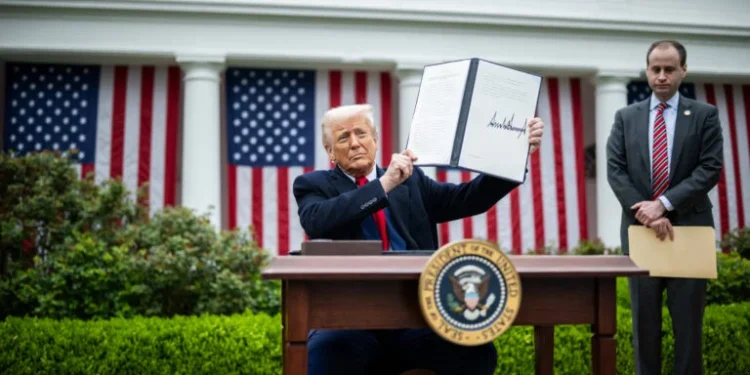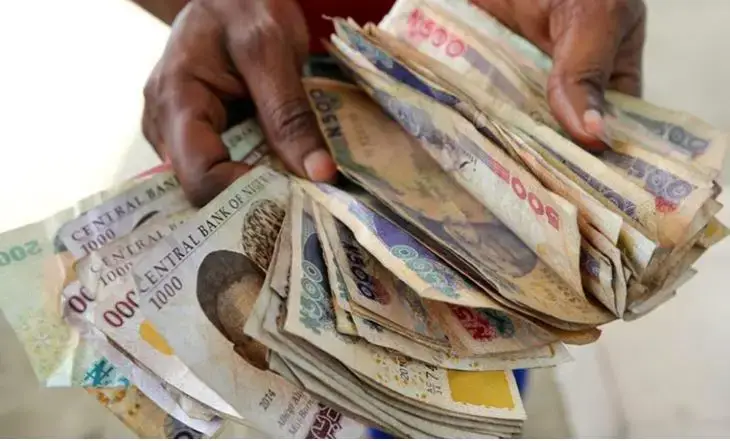In a sweeping move to reshape international trade, U.S. President Donald Trump announced fresh tariffs on all imports into the United States on Wednesday evening, including a 14 percent levy on goods from Nigeria.
Impact on Nigeria’s Trade with the U.S.
According to 2023 data from the Observatory of Economic Complexity (OEC), Nigeria exported $6.29 billion worth of goods to the U.S.
Key exports included crude petroleum ($4.73 billion), petroleum gas ($920 million), and nitrogenous fertilisers ($167 million).
Over the past five years, Nigeria’s exports to the U.S. have grown at an annual rate of 1.59 percent, increasing from $5.81 billion in 2018 to $6.29 billion in 2023.
Trump’s tariff announcement rattled financial markets, as stocks that had closed higher earlier in the day took a hit following the news. The sudden shift has raised concerns over a potential escalation in global trade tensions.
Trump’s Justification and Executive Order Details
Despite market uncertainties, Trump remained confident about the decision, stating that the move was essential for reaffirming America’s dominance on the global stage.
Following his speech, he signed the executive order, cementing the new trade policy.
The directive enforces a “baseline” 10 percent tariff on all imports and introduces customized reciprocal tariffs for over 60 countries.
He addressed foreign leaders directly, stating: “who will soon be calling to ask for exemptions from these tariffs” must first eliminate their own trade restrictions.
Certain aspects of the order are set to take effect almost immediately. “Effective at midnight, we will impose a 25-percent tariff on all foreign-made automobiles,” Trump declared.
The general 10 percent tariff is scheduled to begin on April 5, with higher country-specific rates commencing on April 9.
Nigeria’s Tariff and the Retaliatory Measure
The U.S. government cited Nigeria’s 27 percent tariff on American goods, along with trade barriers and currency policies, as justification for its 14 percent retaliatory tariff.
Meanwhile, other countries also faced significant tariff hikes, including China and Mexico, which were already subjected to prior trade restrictions.
Key Tariff Rates for Selected Countries:
– China – 34%
– India – 26%
– South Korea – 25%
– Japan – 24%
– Taiwan – 32%
– United Kingdom – 10%
– Vietnam – 46%
– Switzerland – 31%
– Cambodia – 49%
– South Africa – 30%
– Indonesia – 32%
– Brazil – 10%
– Singapore – 10%
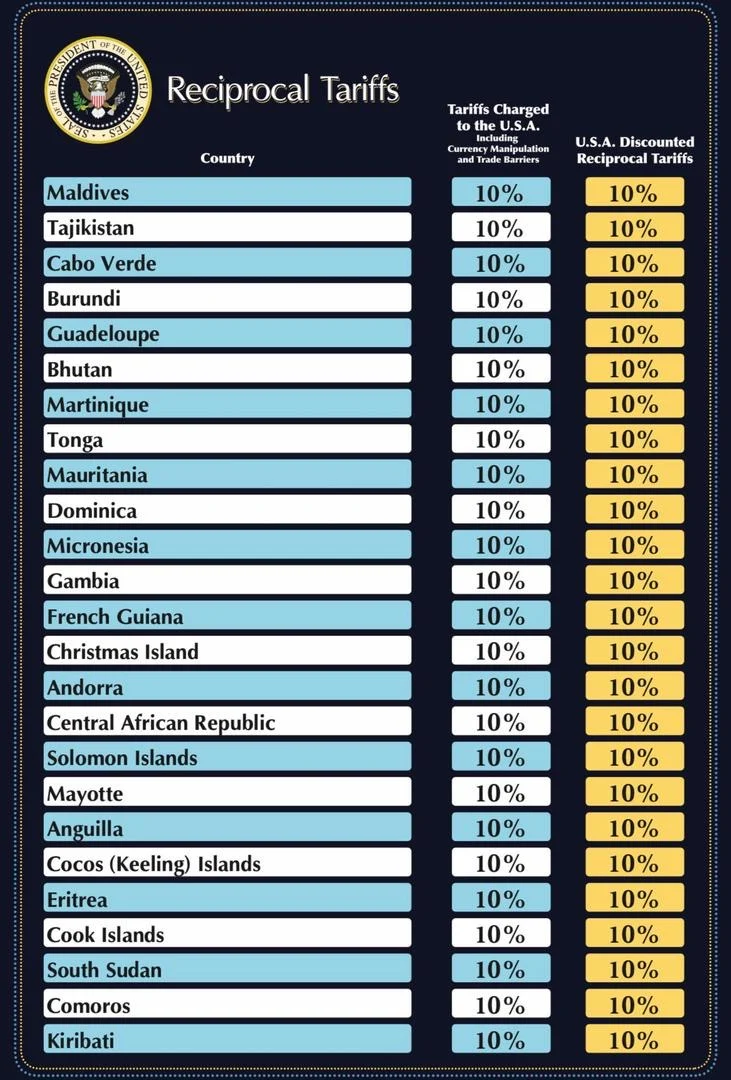
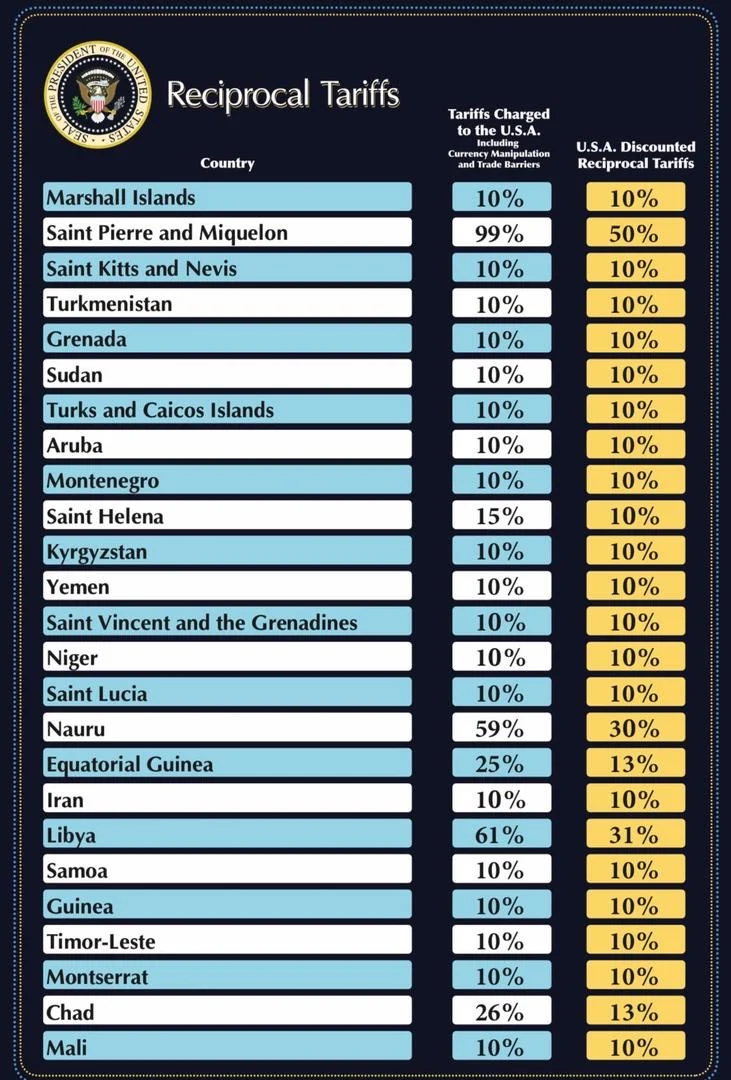
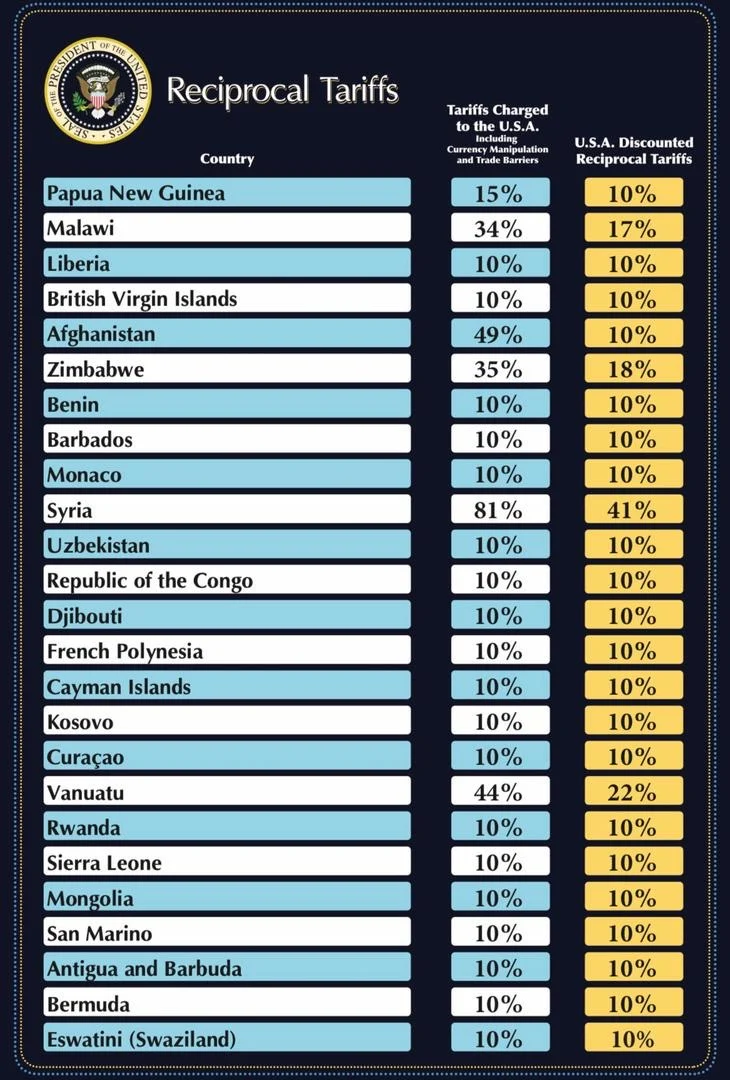
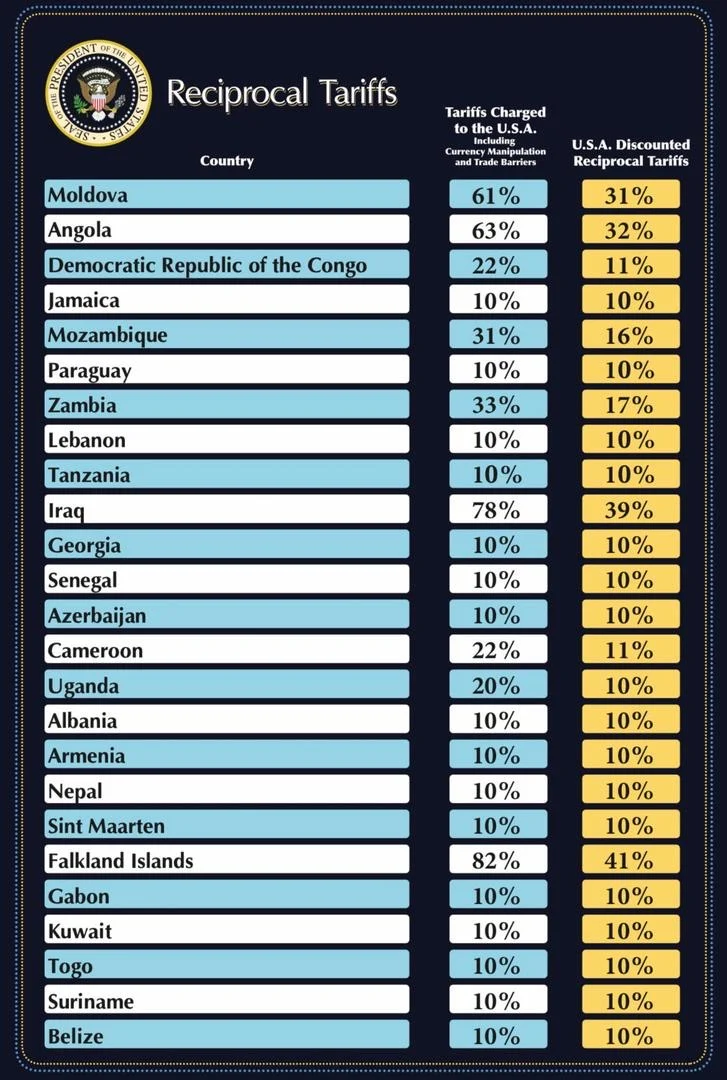
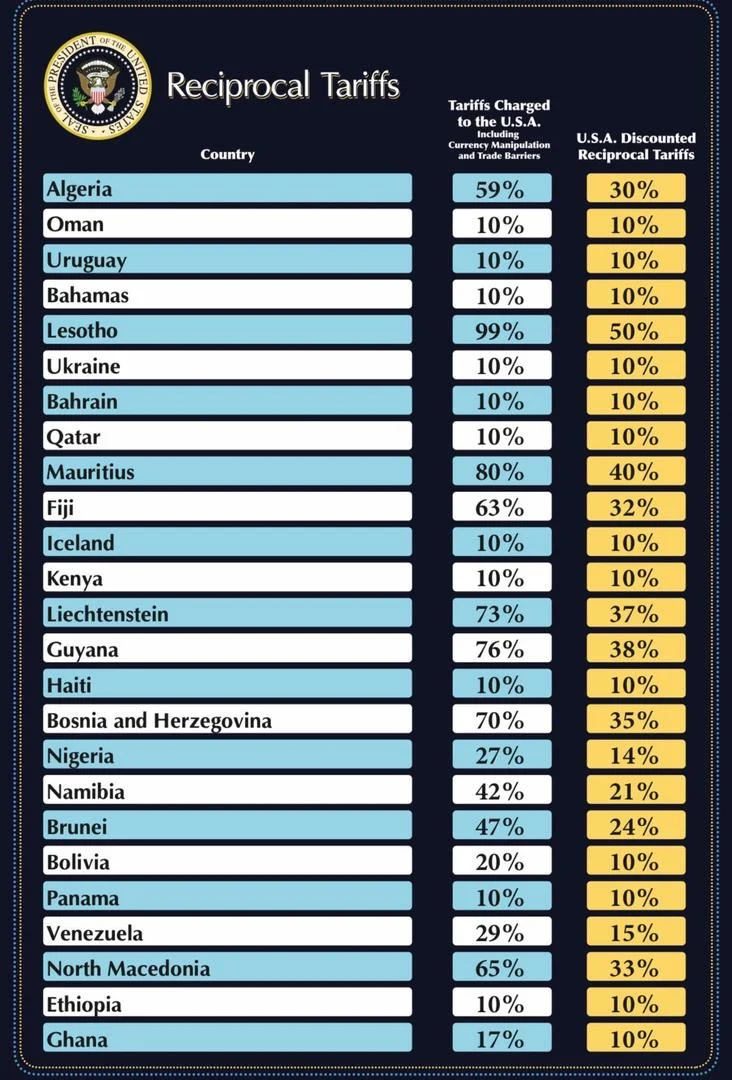
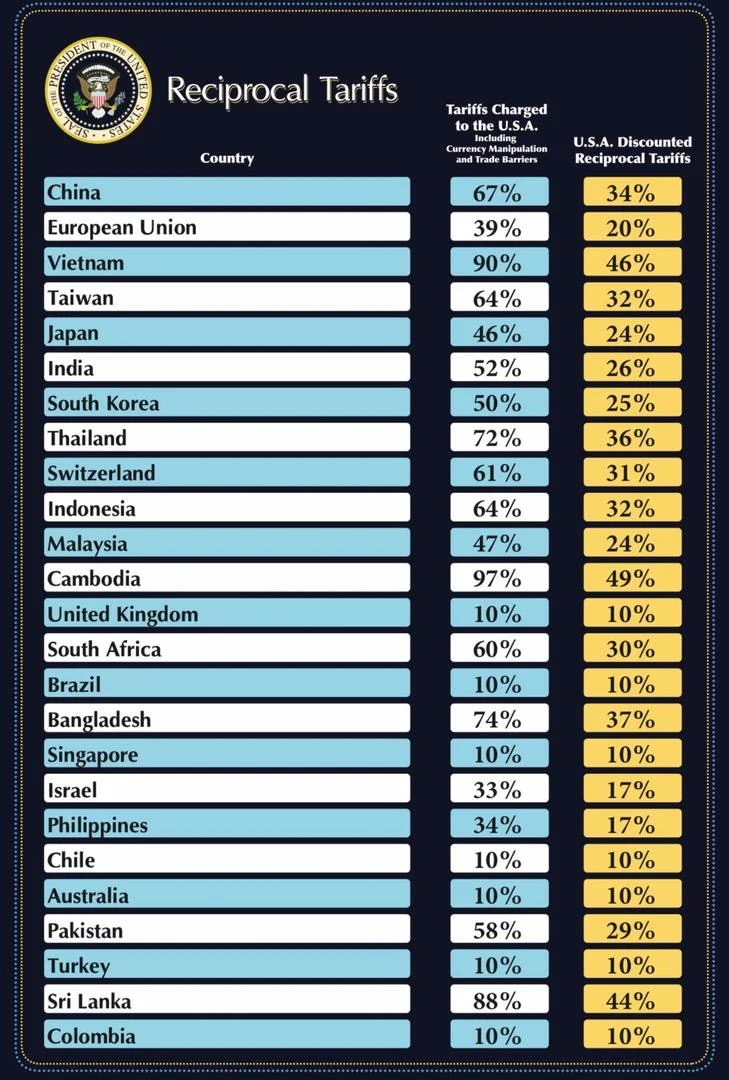
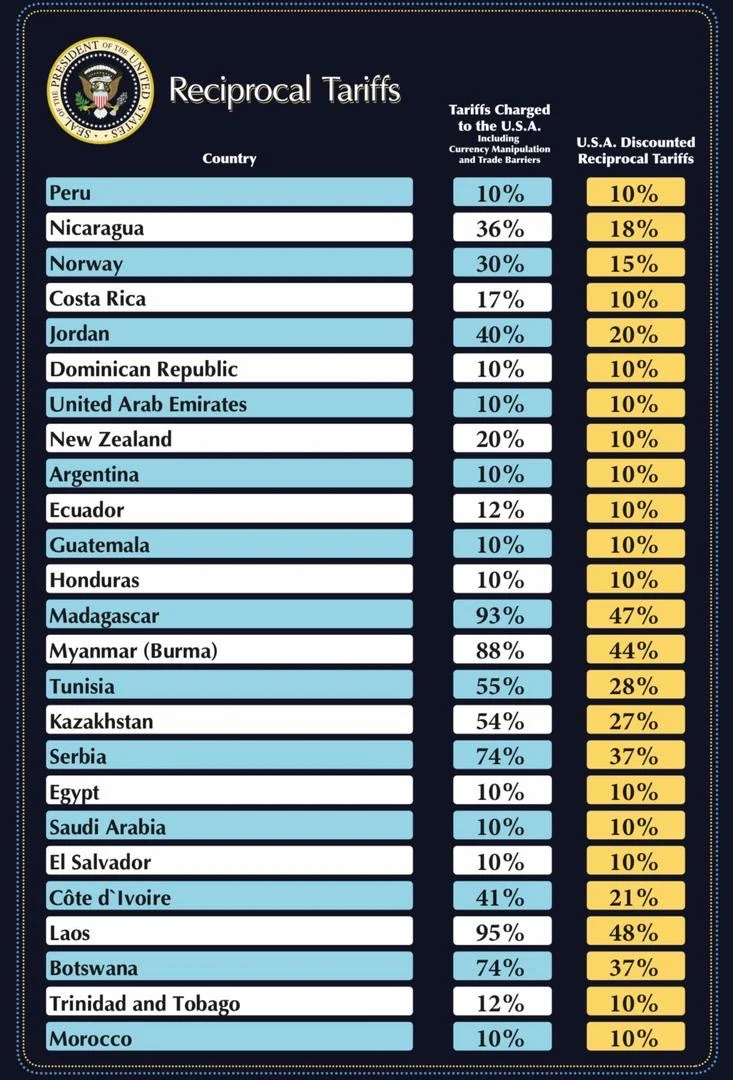
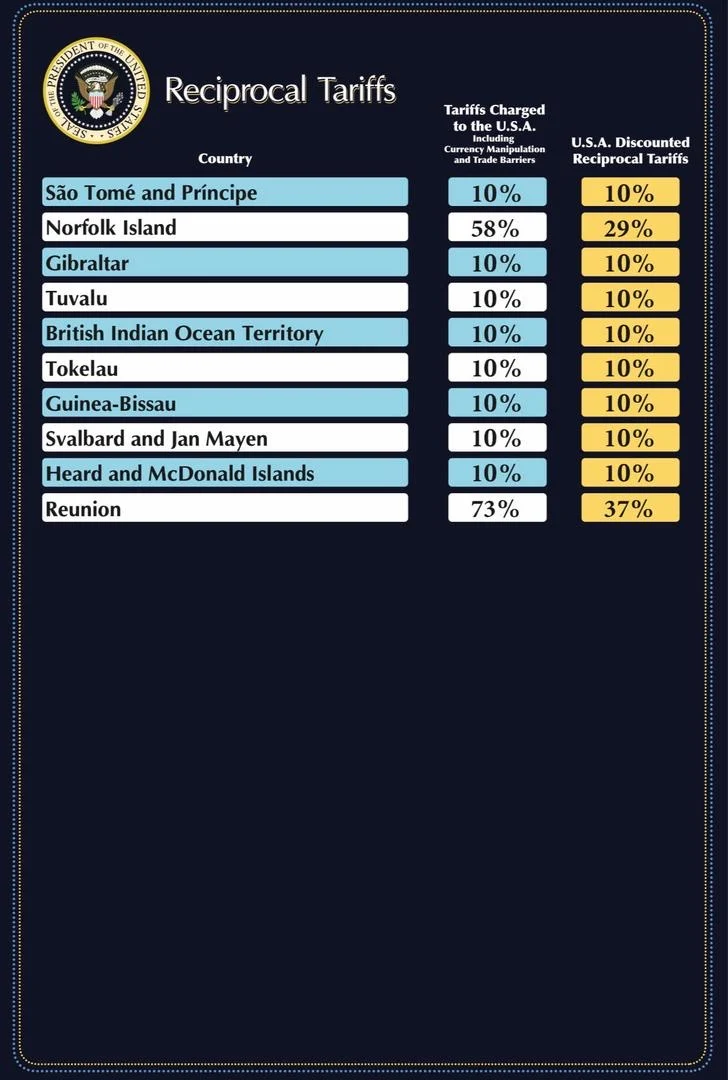
As global leaders assess the implications of this policy, businesses and trade partners are bracing for its impact on international commerce.

